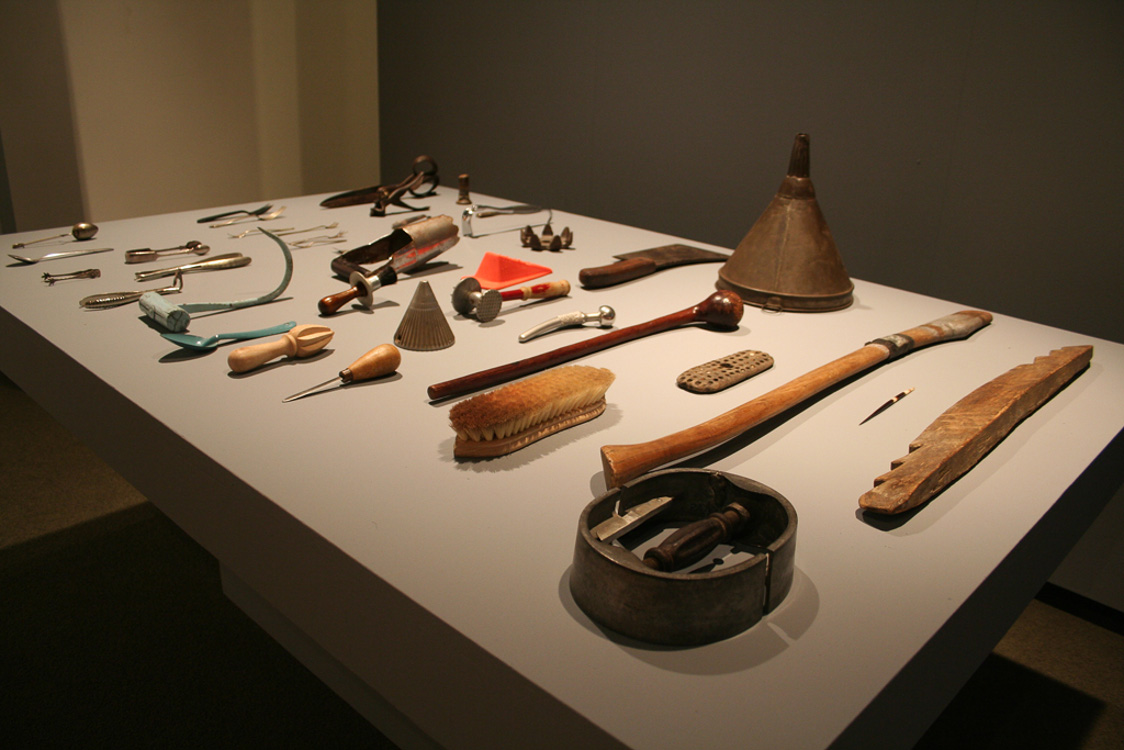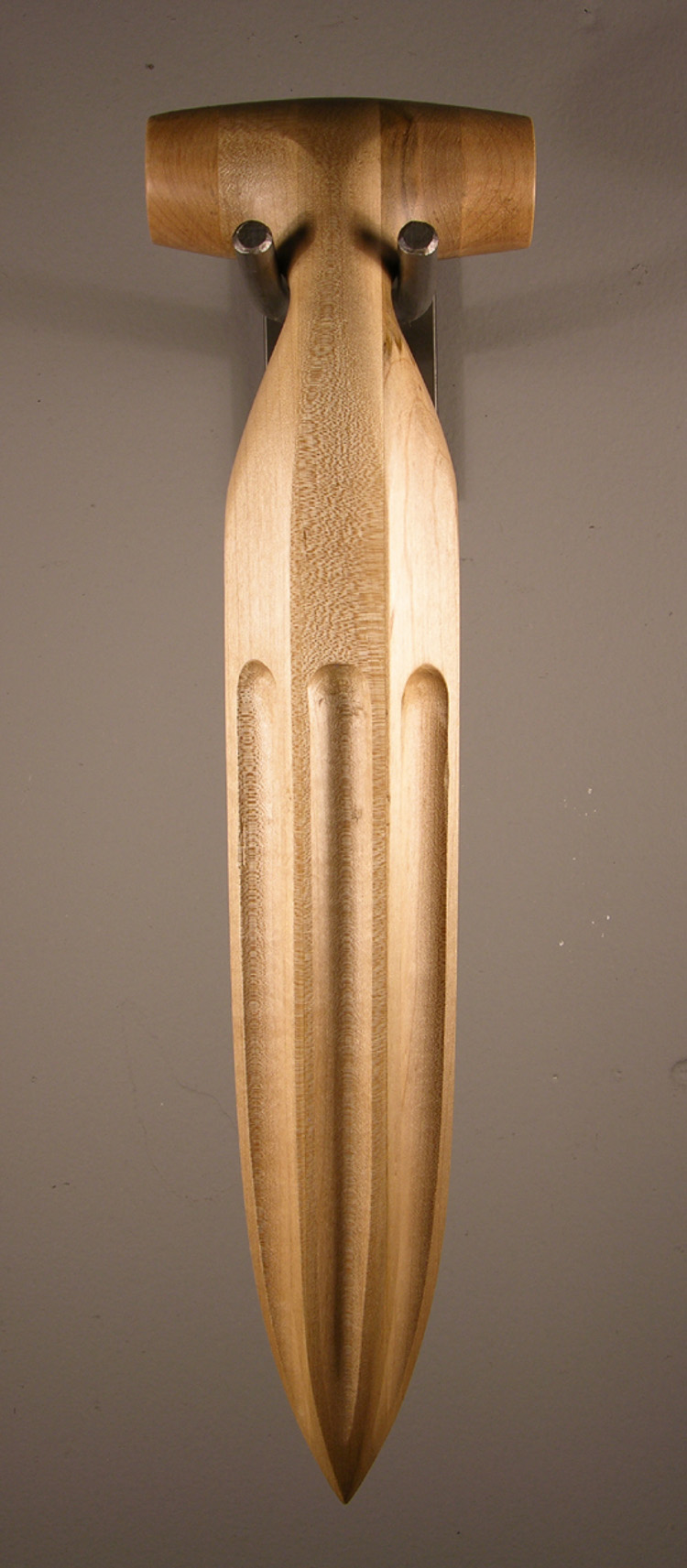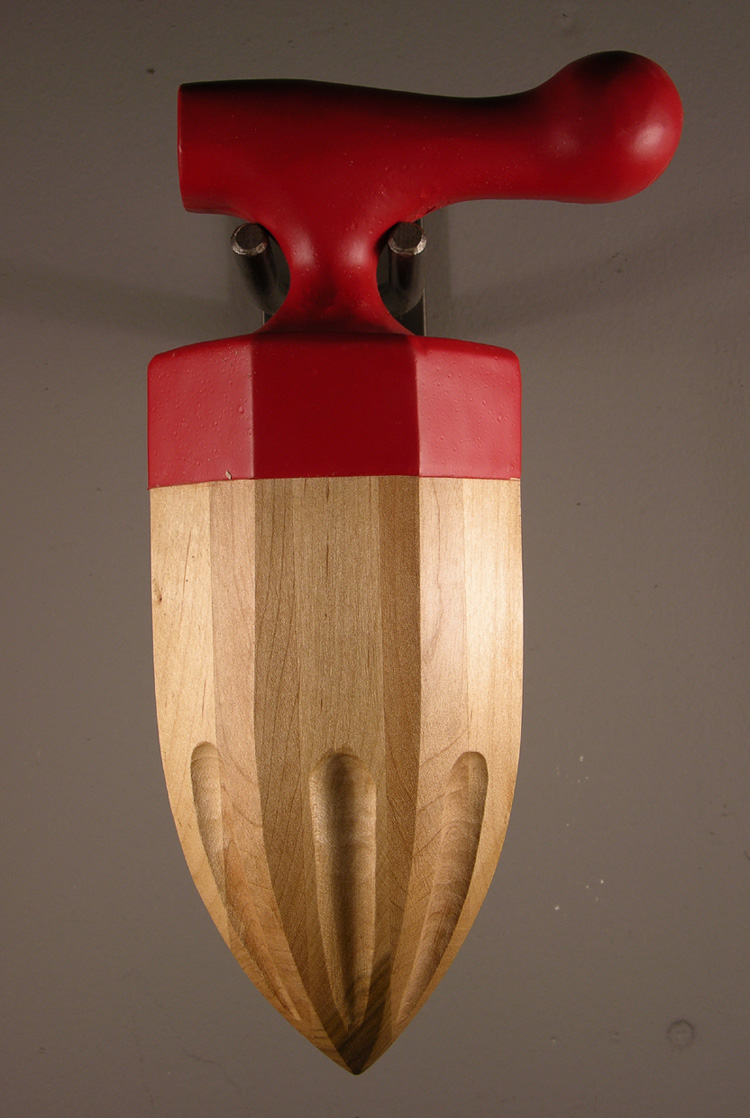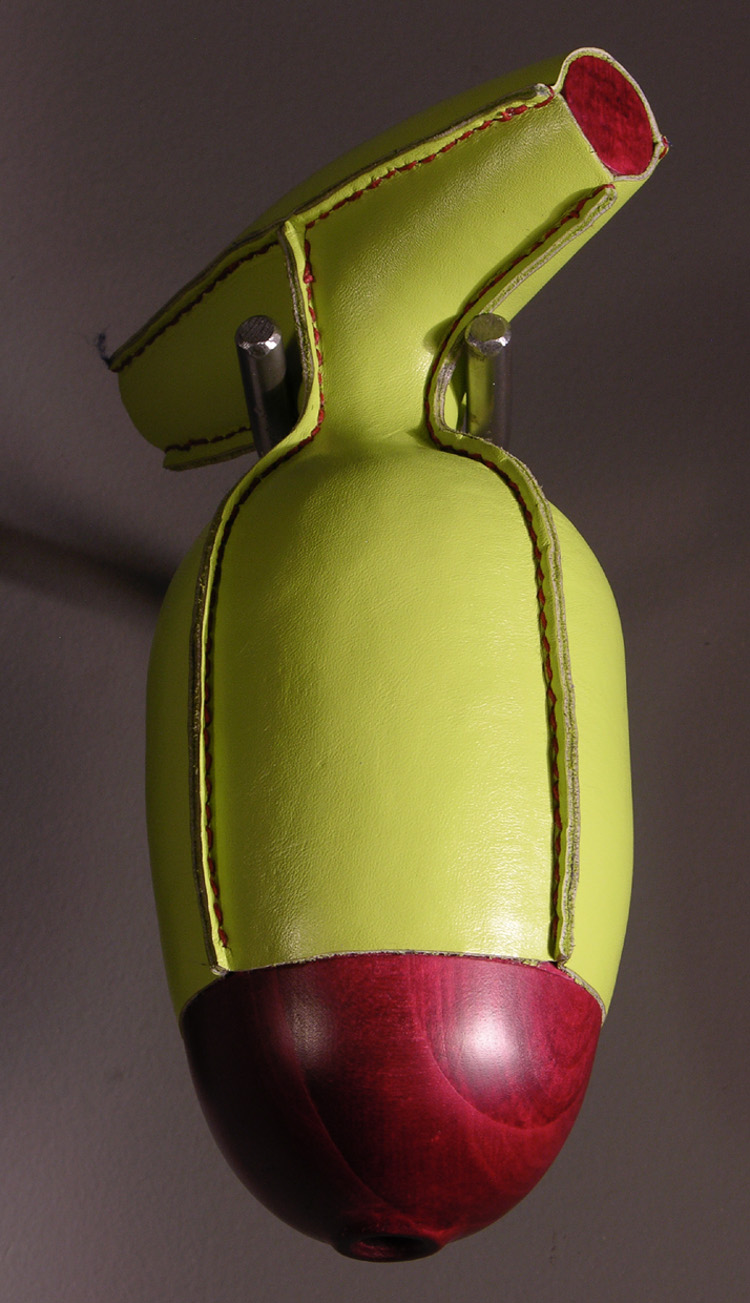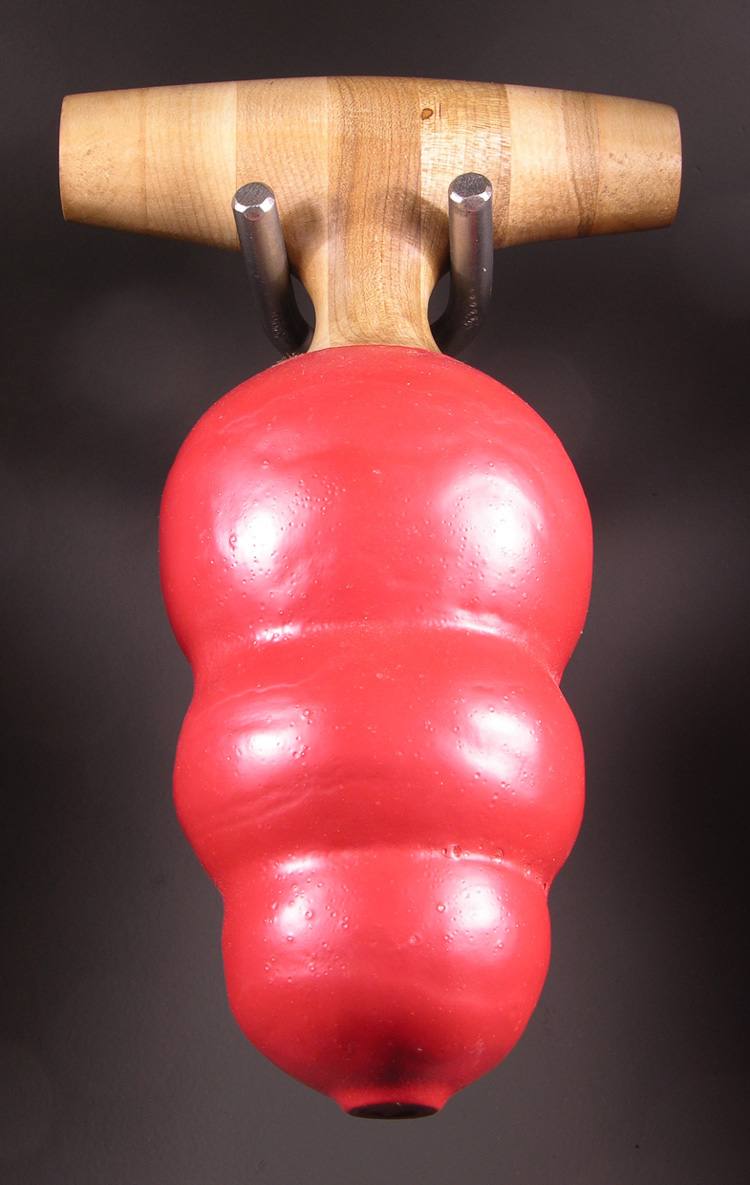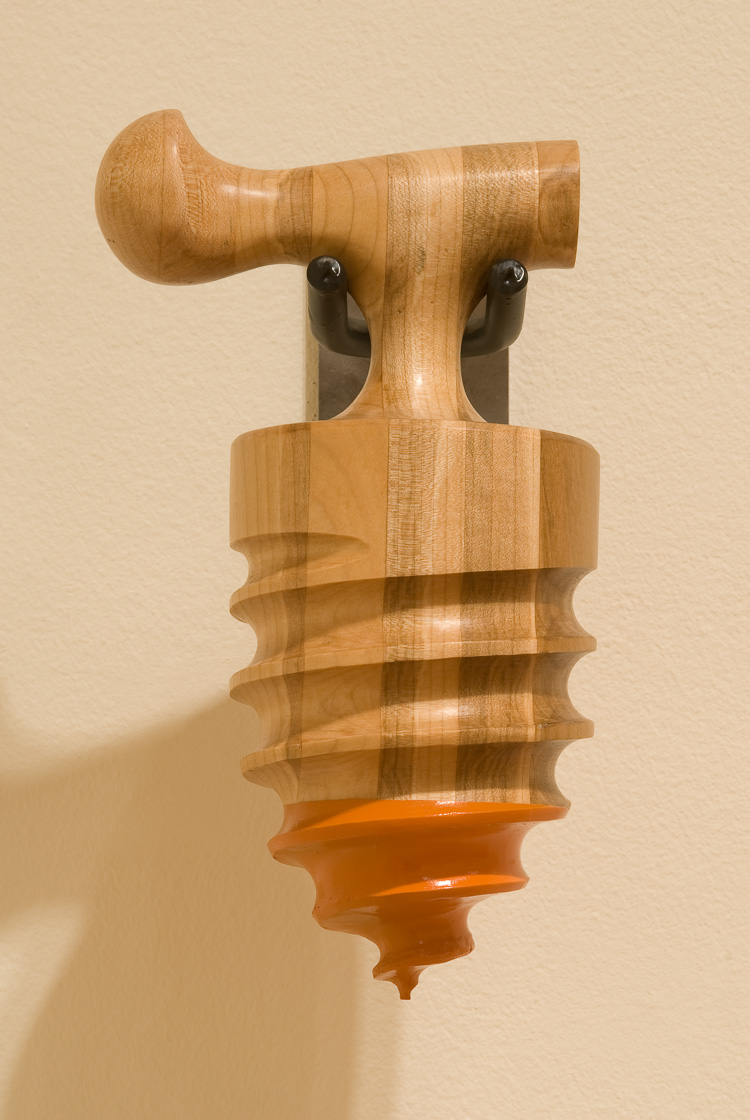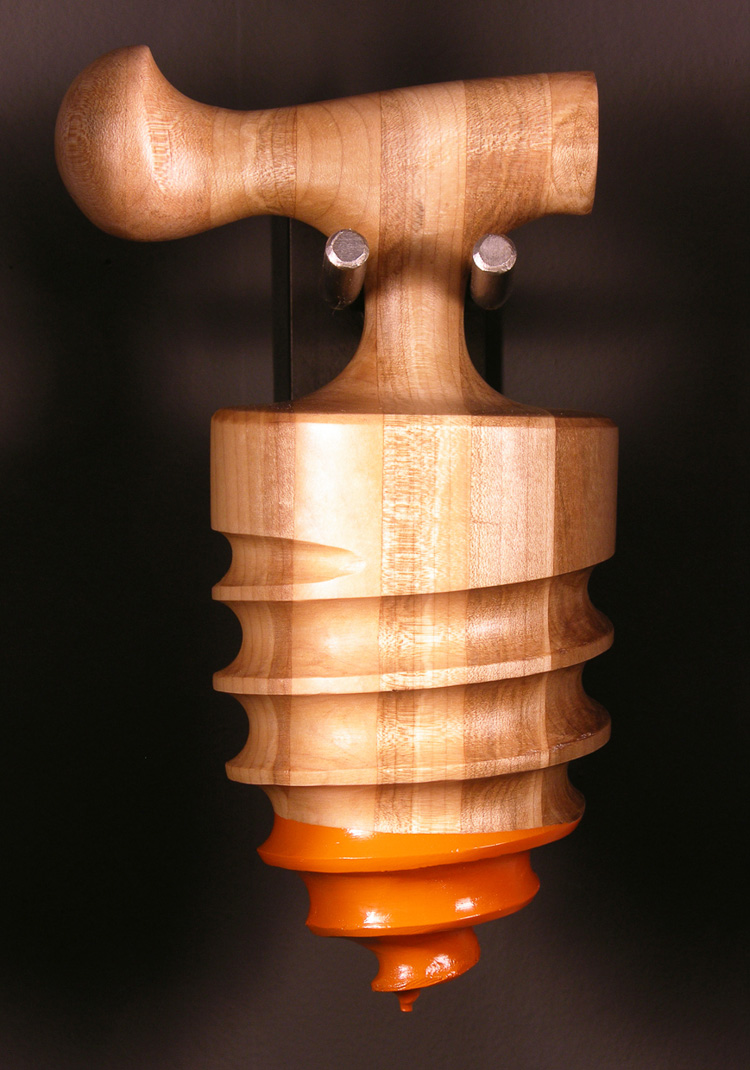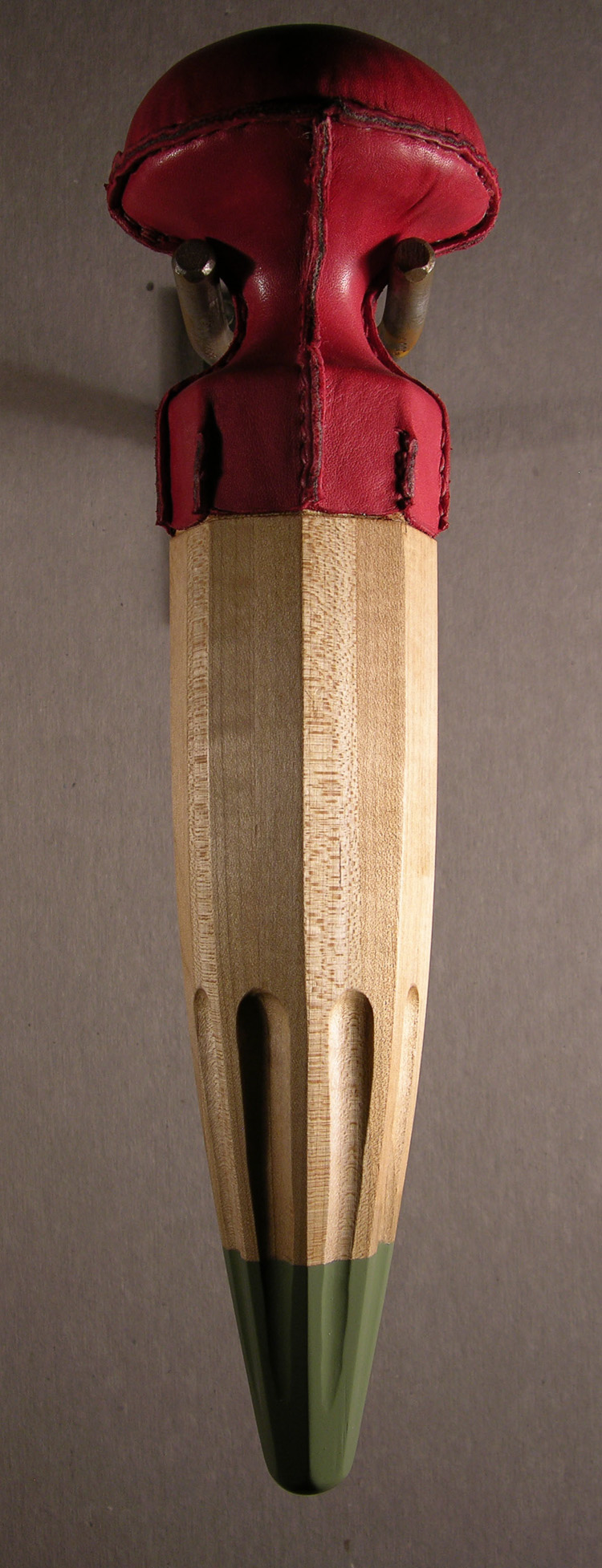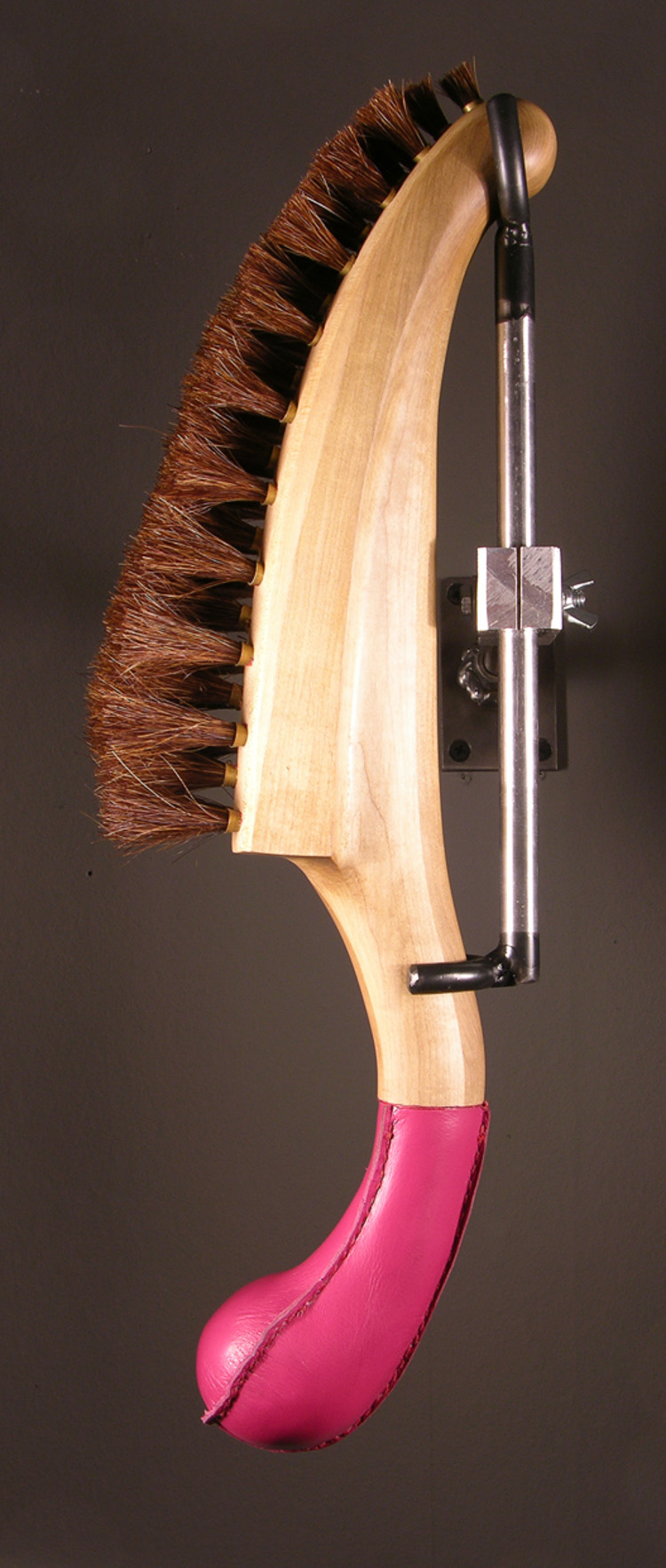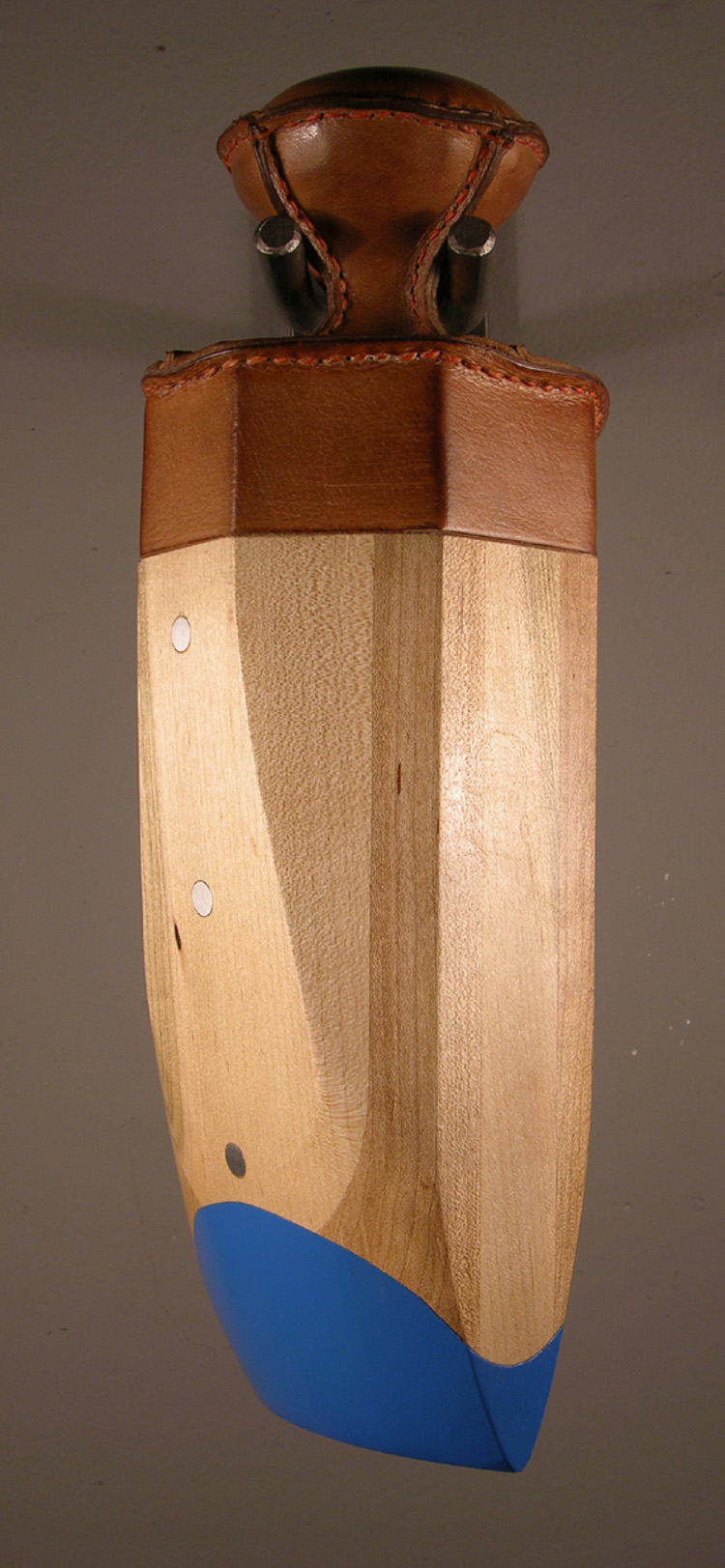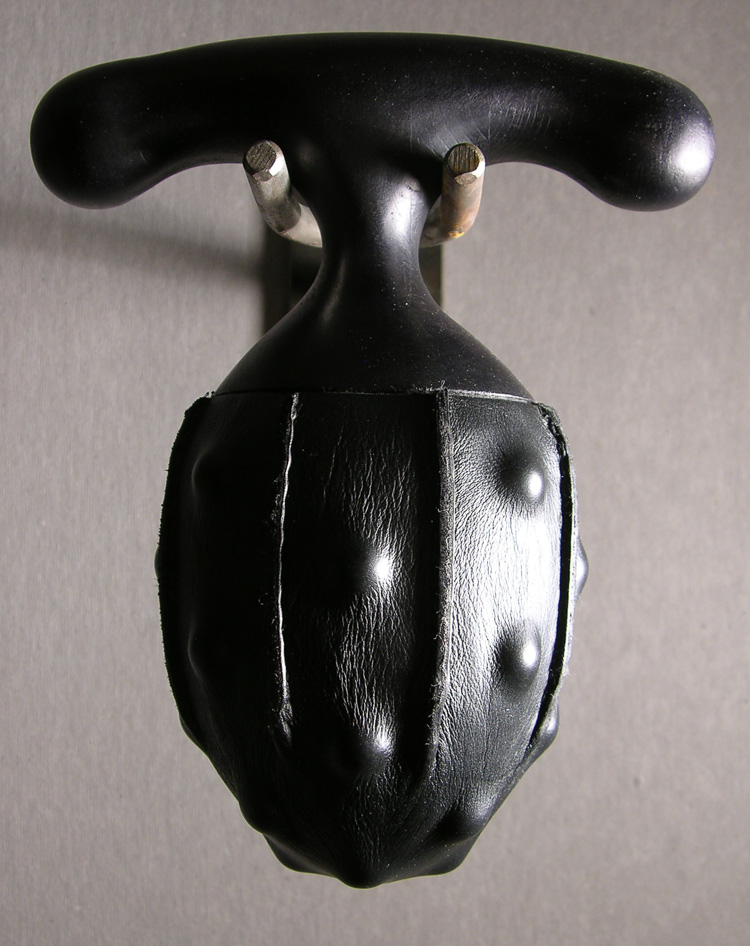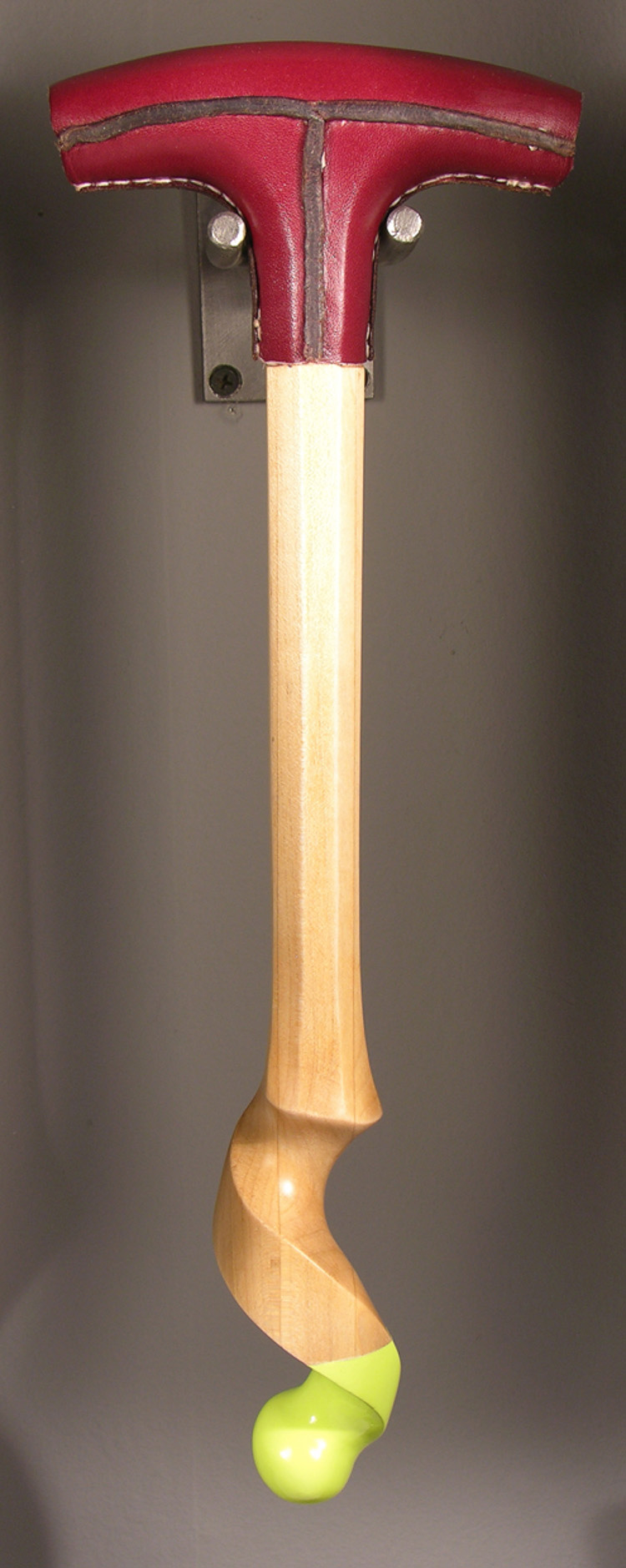A simple machine may be described as the simplest means to gain mechanical advantage. The classical list comprises the lever, the wheel and axle, the pulley, the inclined plane, the wedge and the screw. These may be elegantly reduced to two: The lever and inclined plane.
As a child, the contents of the miscellaneous kitchen drawer held particular fascination. The late 60s through early 70s was a golden era for uncategorized utensils for which the design exceeded the function.
I continue to collect objects that relate to my kitchen drawer experience; an ice hook, a couple of door wedges, an oversized pair of tailor’s scissors, a giant meat cleaver, a small collection of diabolical-looking surgical tools, a hat stretcher and an oyster knife or two, to mention but a few. The method for collection is simple; they may only be stolen, borrowed, retrieved from ruined buildings, found or inherited. Divorced from their purpose, the surfaces and edges of these banal instruments are quite evocative.
The objects that I make have two ends (as does almost anything) the one appeals to the hand, an invitation to wield, push, twist or withdraw, depending on one’s intuitive response the implied handle. The “active” ends appear designed to exploit a gap, opening, crack or orifice of some kind. The lack of explanation or instruction leaves the purpose of the object to speculation or imagination.
